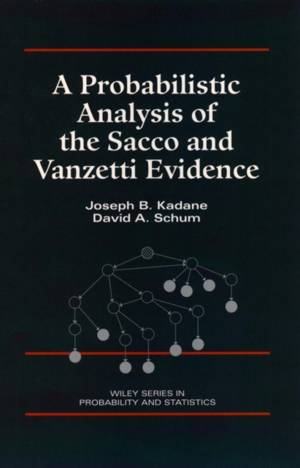
- Retrait gratuit dans votre magasin Club
- 7.000.000 titres dans notre catalogue
- Payer en toute sécurité
- Toujours un magasin près de chez vous
- Retrait gratuit dans votre magasin Club
- 7.000.0000 titres dans notre catalogue
- Payer en toute sécurité
- Toujours un magasin près de chez vous
A Probabilistic Analysis of the Sacco and Vanzetti Evidence
Joseph B. (Carnegie Mellon University) Kadane, David A. (George Mason University) Schum
236,45 €
+ 472 points
Description
This book crosses traditional intellectual disciplines to demonstrate the application and usefulness of statistical concepts and methods.
Spécifications
Parties prenantes
- Auteur(s) :
- Editeur:
Contenu
- Nombre de pages :
- 400
- Collection :
Caractéristiques
- EAN:
- 9780471141822
- Date de parution :
- 12-06-96
- Format:
- Livre relié
- Dimensions :
- 165 mm x 239 mm
- Poids :
- 726 g

Les avis
Nous publions uniquement les avis qui respectent les conditions requises. Consultez nos conditions pour les avis.






